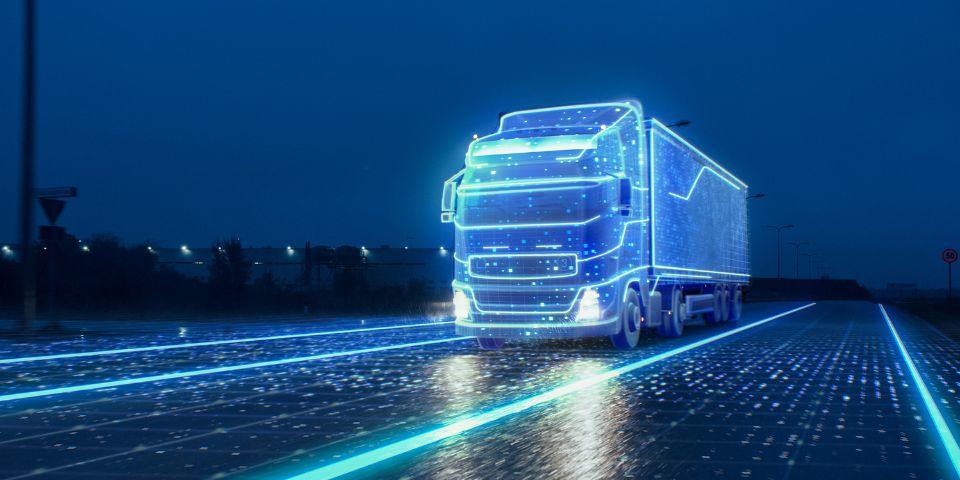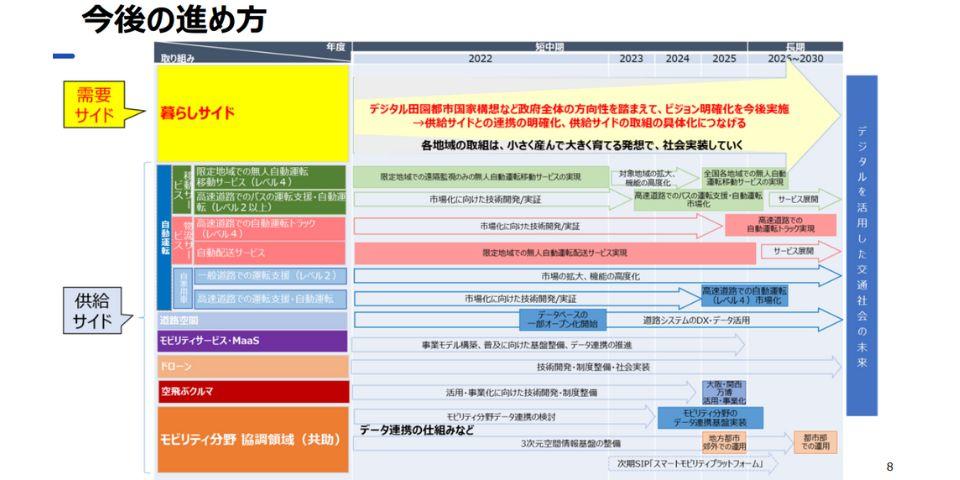
autonomous driving is currently being promoted as a joint public-private initiative, and recently we have been hearing a lot of news about demonstration experiments aimed at social implementation of autonomous driving, both domestically and overseas, and when will it become widespread? I'm sure there are many people who are wondering if this is the case.
・When will autonomous driving become widespread?
・What is the current status of the practical application of autonomous driving?
・What is the schedule for social implementation in the future?
This time, in order to resolve the above questions, we will explain in detail by level and industry.
Also, if you have questions such as ``What is autonomous driving?'' or ``What are the levels of autonomous driving?'', we recommend reading the article below first.
When will autonomous driving be put into practical use? Explaining the situation by level
In order to explain when autonomous driving will be put into practical use, it is necessary to understand the situation at each level and domestic laws and regulations.
For those who want to know more about the levels of autonomous driving, the following explanatory article may be helpful.
First of all, the current state of autonomous driving is that Level 2 autonomous driving is the mainstream, both domestically and internationally. This refers to so-called ADAS (advanced driver assistance systems) such as automatic braking and lane keeping. From there, some limited vehicles, such as the Honda Legend, are equipped with Level 3 autonomous driving systems.
Additionally, the Road Traffic Act will be revised in April 2023, making it legally possible to drive at level 4 autonomous driving. The government is working with these laws and private companies involved in autonomous driving to gradually spread the use of Level 4 vehicles by 2025 or later. The roadmap that describes this specific process will be discussed later in the next chapter.
Furthermore, it is still unclear when Level 5, which will realize fully autonomous driving without any restrictions, will be achieved. All the uncertainties surrounding road traffic must be cleared, and it is extremely difficult to drive on roads that are complicated and have no boundaries with sidewalks, even in heavy snow or rain, as in normal times. There are quite a few famous engineers who say that this would be difficult to achieve with currently available technology.
Practical implementation schedule for autonomous driving
The spread of autonomous driving cannot be achieved through the efforts of automakers alone.
The first one is legal development. This is the case when the law was amended in January 2024 to allow level 4 autonomous driving vehicles to drive on public roads. Another example is the development of infrastructure related to autonomous driving. In addition to installing high-precision 3D maps and road-to-vehicle communication systems (V2I), cybersecurity measures are also required. For this reason, the government and private sector are working together to putautonomous driving into practical use in accordance with the "Public-Private ITS Concept/Roadmap" formulated by the government.
First, according to the "Public-Private ITS Concept/Roadmap" below, autonomous driving of automobiles is divided into three categories: "mobility services (taxi, bus, etc.)," "logistics services (trucks, etc.)," and "private vehicles." isbeing organized.
For the first type of transportation service, in 2024, the company plans to commercialize unmanned transportation services in limited areas that require remote monitoring, as well as driver assistance and autonomous driving for buses on expressways. The goal is to realize unmanned transportation services by the end of 2025, and to put autonomous driving into practical use after 2025.
For the second logistics service, the company aims to achieve level 4 autonomous driving trucks on expressways and unmanned autonomous delivery services in limited areas by 2025 or later.
The third private car is aimed at achieving level 4 autonomous driving on highways by the end of 2025. Looking at this schedule, it means that general consumers will not have the opportunity to experience level 4 autonomous driving vehicles until 2025 at the earliest.
autonomous driving challenges and practical application status by industry

In the automobile industry, various efforts are being made in line with public-private ITS initiatives and roadmaps toward the practical application of autonomous driving. However, as the industry changes, the challenges facing the practical application of autonomous driving will differ.
In this chapter, in addition to private cars, we will focus on trucks in the logistics industry and taxis in transportation services, and explain the challenges of autonomous driving and the state of practical application.
Issues with private cars and status of practical use
First of all, when it comes to self autonomous driving private cars, Level 2 autonomous driving is the mainstream, and Level 3 autonomous driving systems are currently in practical use in a limited number of vehicles. Currently, development of Level 4 autonomous driving is underway.
There are many technologies used, such as highly accurate sensors and cameras to obtain traffic conditions in real time, AI to judge the situation of pedestrians, bicycles, and surrounding vehicles, and technology to accumulate and process large amounts of data at high speed. Naturally, there are many challenges. For example, the use of satellite positioning systems (GNSS, etc.) for autonomous driving vehicles to constantly know their location is considered effective, but this method poses the problem of increasing the number of areas where satellites are not visible, making it difficult to receive satellites.
In addition, it is necessary to update and generate high-precision 3D map data in real time, but there is also the issue of further shortening lead times for safe autonomous driving.
The mechanism and technology of such autonomous driving is explained in the article below, so if you are interested, please read it.
Issues with trucks in the logistics industry and status of practical use
As of January 2024, the state of practical application of autonomous driving for large trucks has reached level 2 of autonomous driving. In Japan, this vehicle is the ``Super Great'' sold by Mitsubishi Fuso. Further development of autonomous driving technology for large trucks is progressing, but unlike for regular passenger cars, there are situations in which the practical application of level 3 autonomous driving is being skipped and progress is being made to level 4.
The background to this development is the increasing demand for parcel delivery services due to an increase in e-commerce transactions, a shortage of truck drivers, and regulations on overtime work for truck drivers that will be introduced in 2024, which the logistics industry is facing. There are circumstances. As a result, there is a concern about the shortage of truck drivers, and it has attracted so much attention that it has been referred to as the logistics industry's ` `2024 problem.''
The public and private sectors are working together to solve this `` 2024 problem'' and are working on ``Level 4'' autonomous driving for large trucks, but since unmanned autonomous driving is not possible at Level 3, the number of drivers required is limited. However, there is still little hope for practical application in the logistics industry. In that case, the idea is to skip the commercialization of Level 3 and start developing Level 4, which is driverless.
In particular, level 4 automation of long-distance trucks that require long hours of work late at night is considered a promising strategy for reducing costs and optimizing human resources.
The government is planning to install lanes for autonomous driving cars on part of the Shin-Tomei Expressway in 2024, making it possible to achieve "Level 4 "autonomous driving, especially for truck operations at night. The plan is to proceed with verification.
Challenges and practical application status of taxis in mobile services
As of January 2024, domestic autonomous driving have been put into autonomous driving use to level 2. Since the taxi vehicle itself is no different from a general commercial vehicle, it can be said that the technological level of the vehicle is almost the same as of January 2024.
On the other hand, when looking at the aspect of mobile services, there are problems that general commercial vehicles do not have. This is because there are challenges that differ depending on the region, such as the role required of mobile services, the severity of the problem, and the causes and factors.
In rural areas, as the population declines, it will become difficult to maintain public transportation such as trains and buses, and there are concerns that the movement of residents without licenses will be restricted. Furthermore, in urban areas like Tokyo with a large population and extensive public transportation, traffic congestion is an issue.
The "Public-Private ITS Concept/Roadmap" aims to address these issues by "improving mobility services and autonomous driving technology through seamless collaboration with public transportation such as railways and buses, making full use of new information and communication technologies such as AI and IoT." It is recognized that it is important to integrate the
Summary
In this article, we have provided a detailed explanation of the current situation and future prospects by level and industry, with the question of when autonomous driving will be put into practical use. The commercialization of autonomous driving technology is progressing in stages, and each industry has different approaches and challenges.
Automobile manufacturers and related companies are putting effort into development, and cooperation between the government and private companies in areas such as legal and infrastructure development is essential for the spread of autonomous driving, so the public and private sectors should work together to promote it. I'm getting lost.
Inquiry
the Company, Macnica, provides a variety of products and services related to autonomous driving. If you have any questions or requests regarding autonomous driving, please feel free to contact us below.

